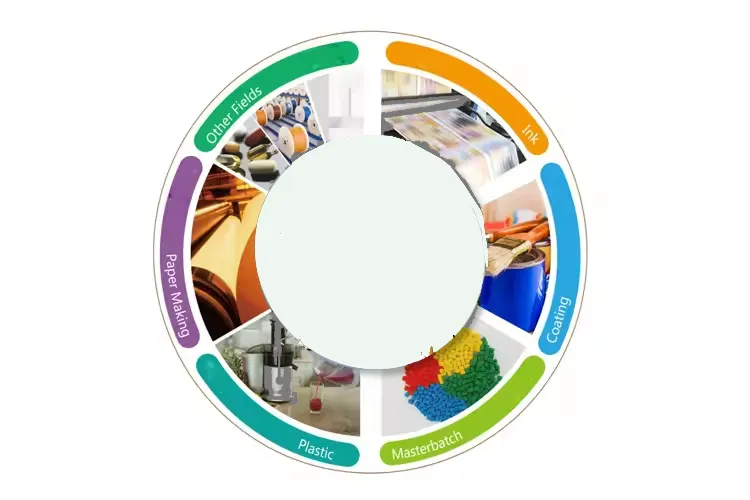
Déc . 05, 2024 14:26 Back to list
tio2 cost
The Cost of Titanium Dioxide An Overview
Titanium dioxide (TiO2) is a versatile and widely used mineral with numerous applications in various industries, including coatings, plastics, paper, cosmetics, and food production. Due to its outstanding whiteness, brightness, and opacity, TiO2 is primarily used as a pigment. Over the years, the demand for titanium dioxide has grown, leading to an analysis of its cost implications on different sectors and its overall impact on the market.
Key Factors Influencing TiO2 Costs
1. Raw Material Availability The main raw materials for TiO2 production are ilmenite, rutile, and anatase, which are mined and processed. The supply and availability of these resources significantly influence the production costs. Disruptions in mining operations due to environmental regulations or geopolitical issues can lead to supply shortages, thereby increasing the cost of TiO2.
2. Production Process There are primarily two processes for producing TiO2 the sulfate process and the chloride process. The sulfate process uses sulfuric acid and is typically less expensive, but it also generates more waste and is less environmentally friendly. The chloride process, while more expensive due to its higher energy requirements and lower waste output, yields a purer form of TiO2. Changes in production methods or advancements in technology can impact the overall cost structure of TiO2.
3. Energy Prices Energy prices are a crucial factor in the production of titanium dioxide. The production process is energy-intensive, particularly in the chloride method. Fluctuations in energy prices can cause significant changes in manufacturing costs, ultimately affecting the price of TiO2 in the market.
4. Global Demand The demand for TiO2 is closely linked to various industries. The construction industry, for instance, utilizes TiO2 in paints and coatings, while the automotive sector employs it in finishes and parts. Economic growth in emerging markets and shifts towards sustainable construction are increasing the demand for high-quality paints and coatings, which places upward pressure on TiO2 prices.
5. Market Dynamics The titanium dioxide market can also be affected by competitive dynamics. Major producers, such as Chemours, Tronox, and Kronos, have significant influence over pricing. Their operational efficiencies, innovations in production, and ability to manage supply chains can lead to variability in costs, impacting smaller competitors and the broader market.
tio2 cost

Effects on Various Industries
The high demand and fluctuating costs of TiO2 have implications across several sectors
- Paints and Coatings This industry is the largest consumer of TiO2. Higher prices can lead to increased costs for manufacturers, which may translate into higher prices for consumers. As companies look to maintain margins, they may seek alternative formulations or look for efficiencies in production.
- Plastics and Polymers The incorporation of TiO2 in plastics enhances durability and aesthetic appeal. Price increases for TiO2 could lead to product price hikes, prompting manufacturers to explore alternatives or reduce TiO2 content, which could affect product performance.
- Food and Cosmetics In the food industry, TiO2 is used as a whitening agent, while in cosmetics, it provides UV protection and opacity. Regulatory scrutiny on the use of TiO2 in these applications is rising, especially with the advent of sustainable practices. Any shifts in regulations can influence TiO2 costs and alternative options available for manufacturers.
Conclusion
The cost of titanium dioxide is a complex issue influenced by various factors, including raw material availability, production processes, energy prices, and global demand. As industries increasingly seek to balance quality and cost-effectiveness, the fluctuations in TiO2 pricing will continue to have a ripple effect across various markets. Understanding these dynamics is essential for manufacturers, consumers, and investors alike to navigate the future landscape of titanium dioxide and its applications effectively.
-
China Lithopone in China Supplier – High Quality Lithopone ZnS 30% Powder for Wholesale
NewsJun.10,2025
-
Top China Titanium Dioxide Company – Premium TiO2 Powder Supplier & Manufacturer
NewsJun.10,2025
-
Fast Shipping 99% Pure TiO2 Powder CAS 13463-67-7 Bulk Wholesale
NewsJun.10,2025
-
Top China Titanium Dioxide Manufacturers High-Purity R996 & Anatase
NewsJun.10,2025
-
Lithopone MSDS Factories - Production & Quotes
NewsJun.10,2025
-
High-Quality Titanium Dioxide in Water Suppliers - China Expertise 60
NewsJun.09,2025
